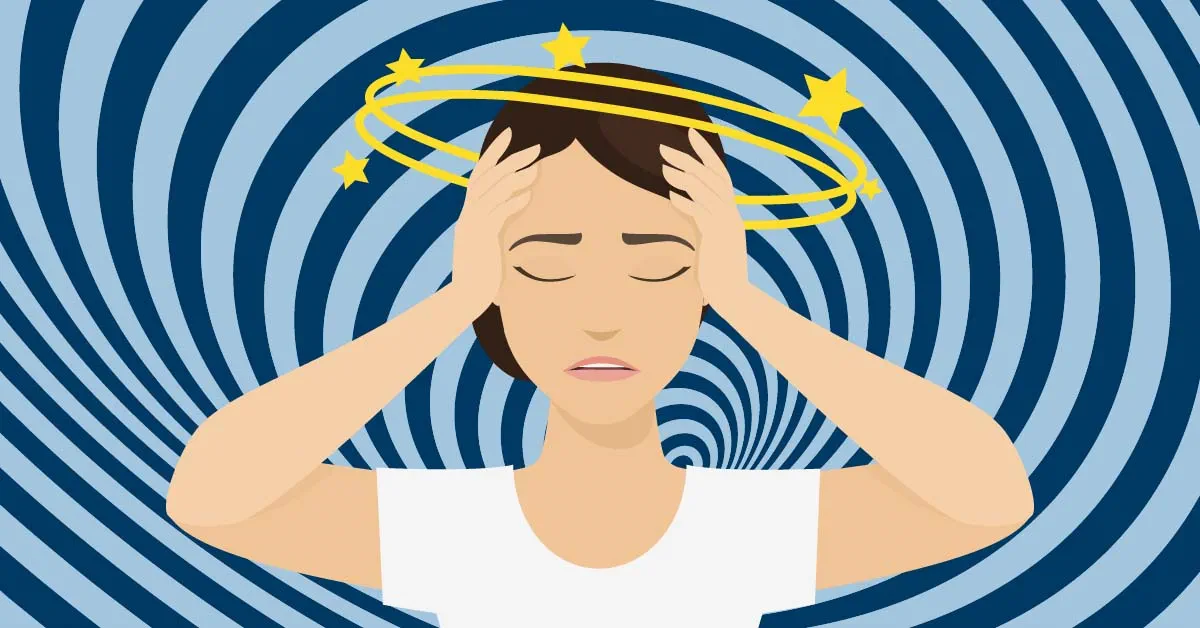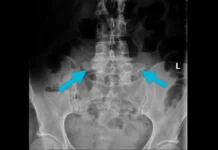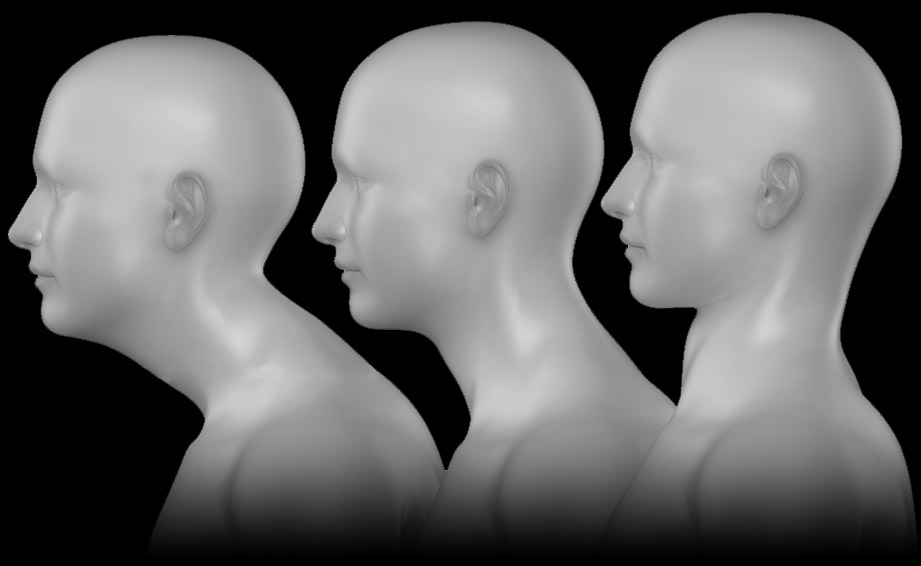Let’s dive into the captivating tale of cervicogenic vertigo, a complex condition that weaves its intrigue at the heart of the cervical spine, unveiling a fascinating story of swirling sensations and intertwined biological mechanisms
Introduction to Cervicogenic Vertigo
Cervicogenic dizziness is a multifaceted medical condition that links symptoms of dizziness to issues originating from the cervical spine. Unlike vestibular-origin vertigo, which stems from the inner ear, cervicogenic dizziness finds its roots in the neck, specifically in the cervical vertebrae. This condition poses a diagnostic challenge due to the diversity of symptoms and the necessity to exclude other potential causes of vertigo.
Symptoms of cervicogenic dizziness are often triggered or exacerbated by neck movements, such as rotation, tilting, or extension. Patients may describe a sense of dizziness, imbalance, or floating, sometimes accompanied by cervicogenic headaches. The exact mechanisms of this association between the neck and dizziness are not fully understood, but anomalies in cervical joints, muscles, or nerves are believed to play a role.
Diagnostically, cervicogenic dizziness can be challenging as its symptoms often overlap with other causes of vertigo. Healthcare professionals rely on specific criteria to establish a diagnosis, including the presence of neck pain, specific movements triggering dizziness, and symptom improvement with interventions targeting the neck.
Treatment approaches for cervicogenic dizziness are diverse and may involve conservative interventions. Physical therapy plays a central role, with exercises aimed at improving neck stability and mobility. Cervical manipulation techniques performed by qualified healthcare professionals may also be considered for certain patients. Additionally, managing cervical pain, often associated with cervicogenic dizziness, may involve the use of analgesic medications and non-pharmacological approaches such as manual therapy.
Differentiating cervicogenic dizziness from other causes of vertigo is essential to ensure appropriate management. Comprehensive examinations, including clinical assessments and specific tests, are necessary to rule out other medical conditions. Collaboration among various healthcare professionals, such as neurologists, physical therapists, and rehabilitation specialists, can be crucial for accurate diagnosis and effective management of cervicogenic dizziness.
WARNING: The techniques and approaches discussed in this text are intended for informational purposes only and should not be attempted without proper training and expertise. Treatment of cervicogenic dizziness requires precise skills and should only be performed by a qualified and accredited osteopath licensed to practice within their regional jurisdiction. Improper application of these techniques may lead to injury, complications, or worsening of symptoms. Always consult with a certified healthcare professional to determine the most appropriate care for your condition.
Causes and Triggering Factors
Cervicogenic dizziness, a condition where symptoms of dizziness are linked to issues originating in the cervical spine, involves a complex interplay of causes and triggering factors. Dysfunction in cervical joints, such as osteoarthritis or degenerative disc disease, can lead to irritation and inflammation, contributing to the onset of dizziness. Muscle tension and imbalances in the muscles supporting the neck play a significant role, altering proprioception and intensifying feelings of dizziness.
Irritation or compression of cervical nerves, particularly in the upper cervical region, can stem from conditions like herniated discs, amplifying nerve-related issues and exacerbating dizziness. Prolonged poor posture, often exacerbated by modern lifestyles and technology use, strains the neck, disrupting normal biomechanics and contributing to cervicogenic dizziness. Trauma, especially whiplash injuries from accidents, can cause structural damage and cervical instability, becoming triggering factors for the development or worsening of dizziness. Repetitive or sustained neck movements, common in certain occupations or activities, contribute to the condition by placing additional stress on the cervical spine. Emotional stress and psychological factors also play a role, with stress-induced muscle tension and the interconnectedness of the nervous and musculoskeletal systems contributing to dizziness symptoms.
Recognizing these diverse factors is essential for accurate diagnosis and tailoring effective treatment plans, often involving a comprehensive approach encompassing physical therapy, pain management, and lifestyle modifications. As research progresses, a deeper understanding of these factors promises to refine diagnostic precision and enhance therapeutic strategies for individuals grappling with cervicogenic dizziness.
- Cervical Osteoarthritis: Osteoarthritis, or osteoarthritis, in the cervical region can lead to wear and tear on the joints between the vertebrae (zygapophyseal joints), contributing to cervicogenic vertigo.
- Joint Blockages or Restrictions: Blockages or restrictions in the movement of the cervical vertebrae can cause erroneous signals to be sent to the brain, leading to symptoms of vertigo.
- Muscle Spasms: Muscle spasms in the cervical region can disrupt balance and cause feelings of dizziness.
- Herniated Cervical Disc: A herniated disc in the cervical region can put pressure on the nerves and surrounding structures, leading to symptoms of vertigo.
- Cervical Ligament Injuries: Injuries or stretching of the cervical ligaments can disrupt the stability of the cervical spine, contributing to vertigo.
- Cervicogenic Headaches: Cervicogenic headaches may be associated with cervicogenic vertigo, and the headaches themselves may contribute to feelings of dizziness.
- Inadequate Posture: Poor posture, whether at rest or during activities, can place excessive pressure on cervical structures, contributing to vertigo.
- Neck Trauma: Injuries or trauma to the neck can damage cervical structures and contribute to the development of cervicogenic vertigo.
Symptoms of Cervicogenic Vertigo
Cervicogenic vertigo presents a complex array of symptoms rooted in cervical spine issues, making diagnosis and management challenging. The hallmark is a distinct sensation of dizziness or vertigo, often triggered by specific neck movements. This is accompanied by a pervasive sense of imbalance, headaches, and neck pain, forming a triad of primary symptoms. Nausea, visual disturbances, and tinnitus may further contribute to the discomfort. Cognitive impairment during episodes, anxiety, and emotional impact add layers to the condition. Altered gait and coordination issues may also arise, impacting daily activities. Diagnosis involves a thorough evaluation by healthcare professionals, and a multidisciplinary approach is typically necessary for effective management. As research progresses, understanding these symptoms will likely evolve, offering more precise diagnostic tools and targeted interventions for individuals grappling with cervicogenic vertigo.
- Vertigo: The feeling of dizziness is the main symptom of cervicogenic vertigo. People may experience a sensation of rotation or tilting of the environment around them.
- Nausea: Some people with cervicogenic vertigo may experience nausea, often in association with episodes of vertigo.
- Imbalance: A feeling of imbalance or instability, particularly during neck movements, is common.
- Blurred Vision or Visual Distortion: Visual changes, such as blurred vision or temporary visual distortions, may accompany episodes of cervicogenic vertigo.
- Sensitivity to Light and Sound: Some individuals may be sensitive to light (photophobia) or sound (phonophobia) during periods of vertigo.
- Headache: Headaches, especially those that occur at the top of the head (cervicogenic headaches), may be associated with cervicogenic vertigo.
- Numbness or Tingling: Feelings of numbness or tingling can sometimes accompany episodes of cervicogenic vertigo.
- Improvement with Cervical Rest: Cervical rest can relieve symptoms in some cases. Symptoms may be exacerbated by neck movements or head position.
It is important to note that the symptoms of cervicogenic vertigo may be similar to those of other vestibular or neurological conditions.
Pathophysiology of cervicogenic vertigo
The pathophysiology of cervicogenic vertigo is intricate, involving a complex interplay of factors. Proprioceptive dysfunction emerges as a central element, where disruptions in signals from the neck’s muscles, joints, and ligaments create a sensory mismatch, contributing to the perception of dizziness. Altered integration of vestibular and proprioceptive signals disrupts the delicate balance mechanisms, leading to faulty sensory processing. Reflex mechanisms and the involvement of vestibular nuclei in the brainstem are crucial components, with dysfunction in the cervical spine impacting these pathways and potentially exaggerating vestibular responses. The influence on ocular control further complicates the condition, affecting eye movements and gaze stability. Vascular factors are also considered, as cervical spine dysfunction may compromise blood flow to the brain, influencing areas responsible for balance. Additionally, the persistent neck pain often associated with cervicogenic vertigo may contribute to central sensitization, altering pain pathways and exacerbating the overall symptomatology. This multifaceted understanding of the pathophysiology guides healthcare professionals in developing comprehensive diagnostic and therapeutic strategies for individuals grappling with cervicogenic vertigo. As research advances, further insights into these intricate mechanisms hold the promise of refining interventions and improving outcomes for those affected by this challenging condition.
- Cervical Alterations:
- Cervicogenic vertigo is often related to structural or functional changes in the cervical region of the spine. This can include abnormalities in the cervical vertebrae, damaged or degenerated intervertebral discs, as well as muscle strain and affected ligaments.
- Cervical Receptor Irritation:
- Cervical structures are rich in sensory receptors called proprioceptors, which provide information about the position and movement of the head and neck. Alterations in these structures can lead to irritation of the cervical receptors.
- Abnormal Transmission of Sensory Information:
- Due to cervical alterations, sensory information from the neck may be transmitted abnormally to the brain. This can lead to errors in perceiving the position of the head and neck.
- Abnormal Central Nervous System Responses:
- Abnormal signals from the neck can disrupt the functioning of the central nervous system, particularly areas of the brain involved in balance and coordination.
- Imbalance of Sensory Signals:
- The brain normally integrates information from the eyes, inner ears (vestibular system), and proprioceptive receptors in the neck to maintain balance. In cervicogenic vertigo, these signals may be out of balance, contributing to dizziness.
- Triggering Dizziness:
- Neck movements, especially those that involve rotation or flexion, can trigger or worsen vertigo symptoms in people with cervicogenic vertigo. This is often due to abnormal activation of neural pathways involved in the perception of position and movement.
- Associated Symptoms:
- In addition to vertigo, people with cervicogenic vertigo may experience other symptoms such as headaches, blurred vision, nausea, and increased sensitivity to neck movement.
It is important to note that the diagnosis of cervicogenic vertigo can be complex because it can coexist with other types of dizziness.
Diagnosis of Cardiogenic Vertigo
Diagnosing cardiogenic vertigo involves a thorough medical approach, as it can be linked to various cardiovascular disorders. Here are the general steps of the diagnostic process:
- History: The doctor will collect detailed information about the patient’s medical history, including symptoms of dizziness, frequency of episodes, precipitating factors, and any pre-existing heart conditions.
- Physical Exam: A thorough physical exam will be performed to assess blood pressure, heart rate, heart sounds, and other vital signs. Neurological tests may also be performed to rule out other potential causes of dizziness.
- Electrocardiogram (ECG): An ECG records the electrical activity of the heart and can help detect heart abnormalities such as arrhythmias or rhythm disturbances.
- Holter Monitoring: A 24-hour Holter recording may be prescribed to continuously monitor the electrical activity of the heart for an extended period of time.
- Echocardiography: This test uses ultrasound to produce images of the heart, evaluating its structure, function and blood flow.
- Cardiac stress tests: Tests such as myocardial scintigraphy or stress testing may be performed to assess the heart’s response to physical exertion.
- Brain imaging: Brain imaging tests such as MRI or CT scan may be done to rule out neurological causes of vertigo.
- Blood tests: Blood tests may be done to evaluate lipid levels, cardiac markers and other indicators of cardiovascular health.
- Specialized consultation: Depending on the results, a consultation with a cardiologist, neurologist or other specialists may be recommended.
Diagnosing cardiogenic vertigo requires a holistic approach to identify the underlying cause and develop a suitable treatment plan. It is essential to consult a healthcare professional for a thorough evaluation if persistent or recurring symptoms of vertigo are present.
Biological Mechanisms
The biological mechanisms responsible for cervicogenic vertigo are complex and involve interactions between the cervical spine and the vestibular system. The vestibular system is responsible for the perception of balance and spatial position of the body. Here are some aspects of the biological mechanisms associated with cervicogenic vertigo:
- Cervical Receptors and Proprioception: The cervical spine is richly innervated by sensory receptors, including mechanoreceptors and proprioceptors. These receptors send information to the brain about the position and movements of the head and neck. Any dysfunction or irritation of these receptors can disrupt sensory perception, contributing to cervicogenic vertigo.
- Cervico-ocular Reflexes: Cervico-ocular reflexes are automatic responses that occur between head movements and eye movements. When the cervical spine is unstable or has abnormalities, these reflexes can be impaired, causing feelings of dizziness.
- Brain-Cervical Spine Integration: The brain continuously integrates signals from the cervical spine, vestibular system, and other sensory systems to maintain balance. Malfunctions in the communication between these systems can lead to errors in interpreting signals, thus causing dizziness.
- Neurological Modulation: Cervical disorders can modulate the activity of nerve pathways involved in balance control. Neurological changes in the cervical spine can influence how the brain interprets sensory information, potentially leading to feelings of dizziness.
- Spatial Referencing: The cervical spine plays a crucial role in spatial referencing, allowing the brain to perceive the position of the head in relation to the rest of the body. Disturbances in this spatial referencing process may contribute to cervicogenic vertigo.
It is important to note that the exact understanding of the biological mechanisms of cervicogenic vertigo is still evolving, and research continues to advance our knowledge in this area. Diagnostic and therapeutic approaches often aim to restore balance between these sensory systems to alleviate the symptoms of cervicogenic vertigo.
Differentiation from other Dizziness
Distinguishing cervicogenic vertigo from other causes of dizziness is a complex yet crucial task. While the symptoms may overlap with various vestibular and neurological conditions, specific features guide the differentiation. The provoked nature of vertigo by neck movements is a hallmark of cervicogenic vertigo, setting it apart from primary vestibular disorders like BPPV or vestibular neuritis. Migraine-associated vertigo shares similarities but is characterized by distinct visual disturbances and prolonged episodes. Orthostatic hypotension, anxiety, and panic disorders present with dizziness but lack the association with neck movements seen in cervicogenic vertigo. Neurological disorders, Meniere’s disease, medication-induced dizziness, and cardiovascular causes each have their unique features, allowing for a comprehensive evaluation to discern the specific etiology. A multidisciplinary approach, incorporating clinical assessments and diagnostic tests, is crucial for accurate differentiation and effective management, offering individuals experiencing cervicogenic vertigo a tailored and precise path towards understanding and addressing their condition. As research progresses, ongoing insights will likely refine the diagnostic process, further optimizing the identification of cervicogenic vertigo amid the diverse spectrum of dizziness-related disorders.
- Characteristics of Symptoms:
- Cervicogenic dizziness is often triggered by neck movements or specific head positions.
- Vestibular dizziness may be associated with sensations of spinning, swaying, or shifting of the environment around the person.
- Dizziness of neurological origin may be accompanied by other neurological symptoms such as vision disturbances, severe headaches or motor deficits.
- Clinical Context:
- A history of neck trauma, musculoskeletal disorders of the neck or cervical disorders may point towards cervicogenic vertigo.
- A history of inner ear disorders, such as Ménière’s disease, may be indicators of vestibular vertigo.
- Specific Clinical Examinations:
- Specific tests, such as the Vertigo Provoking Position (Dix-Hallpike) test for vestibular vertigo, can help narrow down the cause.
- Thorough neurological evaluations, including brain imaging, may be necessary to exclude neurological causes.
- Answers to Cervical Movements:
- Neck movements or specific tests, such as the cervical flexion-extension test, can trigger or worsen symptoms of cervicogenic vertigo.
- Eye movements and nystagmus tests can be assessed for vestibular vertigo.
- Response to Treatment:
- Cervicogenic dizziness may respond positively to approaches such as cervical osteopathy.
- Dizziness of vestibular origin may require specific treatments aimed at stabilizing vestibular function.
Prevention of Cervicogenic Vertigo
- Joint Mobility Exercises: Incorporate mobility exercises for the neck, shoulders and upper back. These movements help maintain joint flexibility, which is essential for good cervical health.
- Neck Relaxation Techniques: In addition to general relaxation techniques, learn specific relaxation methods for the neck area, such as gentle self-massage or targeted stretches to relieve tension.
- Educate on Inadequate Postures: Become aware of positions that can put excessive strain on the neck, such as prolonged smartphone use. Educate yourself on appropriate postures to avoid these constraints.
- Ergonomic Sleep: Make sure your pillow and mattress properly support the natural curvature of your neck while sleeping. A proper sleeping position is crucial for cervical spine health.
- Progressive Exercise Program: If you are starting an exercise program, start slowly and work your way up. Listen to your body and adjust exercise intensity according to your comfort level.
- Regular Self-Assessment: Regularly self-assess your posture and any discomfort. If you notice any changes, adjust your habits and consult a healthcare professional if necessary.
- Weight Management: Maintaining a healthy body weight helps reduce the load on the spine, including the cervical region.
- Integrate Movements into the Day: Find opportunities to move throughout the day. Avoid sitting or standing still for long periods of time.
Exercises and Rehabilitation
Rehabilitation and exercises play a crucial role in the management of cervicogenic vertigo by strengthening the neck muscles, improving cervical stability, and promoting better proprioception. Here are some exercises and rehabilitation programs that may benefit people suffering from cervicogenic vertigo:
- Cervical Strengthening Exercises:
- Controlled Cervical Flexion-Extension: Gently tilt the head forward and back, maintaining the controlled movement.
- Controlled Cervical Rotation: Turn your head from side to side without causing pain.
- Cervical Stabilization Exercises:
- Isometry Exercises: Engage the neck muscles without movement, holding the head in a specific position.
- Swiss Ball Exercises: Use a Swiss Ball for cervical stability exercises, such as rotational movements seated on the ball.
- Proprioception exercises:
- Head Motion Walking: Walk in a straight line using gentle head movements to improve proprioception.
- Single Leg Balance with Cervical Rotation: Balance on one leg while performing controlled cervical rotations.
- Stretching and Joint Mobilization:
- Neck Muscle Stretches: Tilt your head to one side to stretch your neck muscles.
- Gentle Joint Mobilizations: Specific movements performed by a health professional to improve cervical mobility.
- Biofeedback et Relaxation :
- Muscle Biofeedback: Use biofeedback techniques to help control muscle tension in the neck.
- Relaxation Techniques: Incorporate relaxation methods, such as deep breathing, to reduce stress and tension.
- Gradual Rehabilitation Program:
- Rehabilitation for cervicogenic vertigo should be progressive and tailored to each individual.
- Start with basic exercises and adjust the intensity based on the person’s tolerance.
Tips for Daily Life
At work
- Workstation ergonomics
- Adjust the height of your chair, desk, and computer monitor to maintain a neutral neck posture.
- Take regular breaks to stretch and stretch your legs.
- Work organization
- Schedule regular breaks to avoid sitting for too long.
- Avoid sudden movements of the head and neck.
- Lighting and screens
- Avoid bright lights and flashing screens, as they can trigger symptoms.
- Adjust the brightness of your screen to avoid eye strain.
While driving
- Adjusting the seat and mirrors
- Adjust your car seat to maintain an upright posture.
- Make sure your mirrors are properly adjusted to reduce sudden head movements.
- Defensive driving
- Avoid driving for long periods without a break.
- If possible, use less winding roads and avoid stressful driving situations.
- Alternative transportation options
- Explore alternative transportation options, like carpooling or public transportation, to reduce the stress of driving.
Social and leisure activities
- Open communication
- Let your friends and family know about your condition so they can be understanding of your needs.
- Choice of activities
- Opt for activities that do not involve sudden movements or frequent changes in position.
- Avoid noisy and bright environments that could trigger symptoms.
- Outing planning
- Plan your outings around when you feel best, and be sure to schedule breaks if necessary.
Stress management
- Relaxation techniques
- Incorporate relaxation techniques into your daily routine, such as meditation, deep breathing or yoga.
- Prioritizing sleep
- Make sure you get plenty of sleep, as fatigue can make symptoms worse. Establish a regular sleep routine.
In general
- Hydration and nutrition
- Maintain good hydration to support overall health, including that of the cervical spine.
- Eat a balanced diet to support your well-being.
- Regular medical follow-up
- Consult your healthcare professional regularly to adjust your treatment plan as your condition progresses.
- Continuing education
- Continue to educate yourself about your condition and strategies that can help you. Stay in touch with your medical team for personalized advice.
Psychological Aspects
Stress and Anxiety Management
- Impact on Symptoms
- Stress and anxiety can make cervicogenic vertigo symptoms worse. Stress-induced muscle tension can contribute to neck disorders.
- Stress Management Techniques
- Meditation, mindfulness and deep breathing are effective techniques for reducing stress.
- Regularly practicing these techniques can help maintain a calmer mental state.
- Yoga for Stress Management
- Yoga, especially styles focused on relaxation and meditation, can be beneficial for reducing stress while improving flexibility and body stability.
Relaxation Techniques
- Biofeedback :
- Biofeedback can help people with cervicogenic vertigo become aware of their physiological responses to stress and learn to control them.
- Progressive Muscle Relaxation (PMR) :
- Progressive muscle relaxation involves sequentially contracting and then releasing muscle groups to reduce tension and promote relaxation.
- Guided Visualization:
- Viewing calming scenes can help distract from feelings of dizziness and induce a state of relaxation.
Psychological support
- Psychoeducation:
- A thorough understanding of the condition can reduce anxiety. Healthcare professionals can explain the mechanisms of cervicogenic vertigo to help the patient better manage their symptoms.
- Counseling and Cognitive-Behavioral Therapy (CBT):
- Individual or group counseling may be beneficial in treating the psychological aspects of cervicogenic vertigo.
- CBT can help identify and change negative thought patterns that contribute to stress and anxiety.
- Social Support:
- Support from friends, family or support groups can play a crucial role in the psychological management of cervicogenic vertigo.
- Sharing your experience with others going through the same situation can bring a feeling of understanding and acceptance.
- Managing Expectations:
- Educating patients about the intermittent nature of symptoms and the possibility of fluctuations can help manage expectations and reduce anticipatory anxiety.
Holistic Approach
- Integration of Psychology into the Treatment Plan:
- Healthcare professionals should take a holistic approach by integrating psychological interventions into the overall treatment plan.
- Open Communication:
- Encourage open communication between patients and healthcare professionals to address psychological concerns and adjust the treatment plan accordingly.
Differential diagnosis
- Vestibular Vertigo:
- Vertigo of vestibular origin, such as vestibular neuritis, Ménière’s disease, or inner ear disorders.
- Vestibular Migraines:
- Migraines can sometimes cause vestibular symptoms, including dizziness.
- Central Neurological Disorders:
- Central nervous system disorders, such as brain tumors, stroke, or multiple sclerosis, can cause vertigo symptoms.
- Metabolic Disorders:
- Certain metabolic disorders, such as hypoglycemia or electrolyte disturbances, can cause dizziness.
- Cardiovascular Disorders:
- Heart problems, such as orthostatic hypotension or arrhythmias, may be associated with episodes of dizziness.
- Anxiety or Psychiatric Disorders:
- Psychiatric disorders, such as anxiety or panic disorders, can sometimes cause feelings of dizziness.
- Side Effects of Medications:
- Certain medications, especially those that affect the vestibular system, can cause dizziness.
- Non-Mechanical Cervical Disorders:
- Other cervical problems, such as infection or inflammation, should be considered.
Treating Cervicogenic Dizziness: An Osteopathic Perspective
Cervicogenic dizziness is a perplexing condition that often intertwines with neck pain and dysfunction. It is characterized by a sense of imbalance, light-headedness, or unsteadiness originating from cervical spine issues. While many treatment modalities have been explored, one technique stands out as a cornerstone in managing this condition: Osteopathic Manual Therapy (OMT). This article delves into the principles behind OMT, explains why it is highly effective for cervicogenic dizziness, and offers a step-by-step guide on how to perform this transformative technique.
Why OMT is the Best Technique
OMT shines in the treatment of cervicogenic dizziness due to its holistic approach. By addressing both mechanical restrictions and neuromuscular imbalances, OMT promotes comprehensive healing. Key benefits include:
- Targeted Relief: Techniques such as high-velocity, low-amplitude (HVLA) thrusts and muscle energy techniques (MET) directly address joint restrictions and muscular tension.
- Improved Neuromuscular Control: Proprioceptive feedback from the cervical spine is enhanced, reducing the mismatch between sensory systems.
- Non-Invasive and Patient-Centric: OMT is tailored to each individual’s anatomy and needs, minimizing risks while maximizing outcomes.
Preparing for the Technique
Before performing OMT, a thorough assessment is essential. This includes:
- Patient History: Gather detailed information about the onset, frequency, and triggers of dizziness.
- Physical Examination: Assess cervical range of motion, muscle tension, and joint mobility. Palpation of the upper cervical spine (C0-C3) is particularly crucial, as these segments play a significant role in proprioception.
- Special Tests: Conduct tests like the Cervical Flexion-Rotation Test and Joint Position Error Test to confirm cervicogenic origin.
- Safety Screening: Rule out red flags such as vertebrobasilar insufficiency or central nervous system pathology.
Step-by-Step Guide to Performing OMT
Step 1: Soft Tissue Techniques
Start with soft tissue techniques to relax hypertonic muscles and prepare the area for deeper manipulations.
- Technique:
- Place the patient in a supine or seated position.
- Use gentle kneading and stretching motions along the cervical paraspinal muscles, focusing on the upper trapezius, levator scapulae, and suboccipital muscles.
- Apply steady, rhythmic pressure to release tension and improve circulation.
Step 2: Muscle Energy Technique (MET)
MET is highly effective for addressing muscle imbalances and joint dysfunction.
- Technique:
- Position the patient supine with their head supported.
- Identify the restricted cervical segment and guide the patient’s head into the direction of restriction.
- Instruct the patient to gently push against your resistance for 3-5 seconds, then relax.
- Take up the slack by moving further into the barrier and repeat the process 3-5 times.
Step 3: High-Velocity, Low-Amplitude (HVLA) Thrust
This technique is ideal for restoring joint mobility in the upper cervical spine.
- Technique:
- Position the patient in supine, ensuring their head and neck are well-supported.
- Palpate the restricted joint to identify the dysfunctional segment.
- Use minimal rotation and side-bending to lock the segment below and above the target.
- Deliver a quick, controlled thrust in the direction of restriction, ensuring the motion is precise and within the patient’s comfort range.
Step 4: Suboccipital Release
This technique calms the autonomic nervous system and promotes relaxation.
- Technique:
- With the patient in supine, place your fingertips under the occiput, supporting the head.
- Apply gentle traction and hold for 2-3 minutes, allowing the suboccipital muscles to release.
Step 5: Proprioceptive Training
Enhance cervical proprioception to reduce dizziness recurrence.
- Technique:
- Use a laser pointer affixed to the patient’s head to perform gaze stabilization exercises.
- Guide the patient to track targets on a wall, focusing on slow and controlled movements.
Post-Treatment Care
After the session, educate the patient on ergonomic adjustments, stretching routines, and postural exercises. Advise gradual reintroduction of activities that previously triggered dizziness.
Evidence-Based Impact of Osteopathic Care in the Management of Cervicogenic Dizziness and Related Disorders
Ganer, N. (2015): Multidisciplinary Manual Therapy Management of Cervicogenic Headache: A Case Report
This case study demonstrates the effectiveness of osteopathic spinal manipulative techniques (OSMT) combined with posture correction for cervicogenic headaches. The intervention reduced headache frequency, dizziness, and pain. It emphasizes osteopathy’s role in improving cervical proprioception and neural feedback, supporting a multidisciplinary approach to symptom management.
Read the PDF
Alqahtani, M.M., & Kashoo, F.Z. (2020): Physical Therapy in Cervicogenic Dizziness
This article evaluates physical therapy for cervicogenic dizziness, highlighting the role of cervical stabilization exercises and manual therapy. It emphasizes osteopathic methods in enhancing cervical mobility and reducing dizziness. The findings show that combining manual therapy with rehabilitation exercises significantly improves outcomes and restores balance.
Read the article
Rehman, Y., Kirsch, J., & Bhatia, S. (2021): Impact of Osteopathic Manipulative Techniques on the Management of Dizziness Caused by Neuro-Otologic Disorders
This systematic review protocol evaluates the efficacy of osteopathic manipulative techniques (OMT) in treating dizziness associated with neuro-otologic disorders. Findings suggest OMT improves cervical stability and reduces dizziness, complementing traditional therapies. The study highlights the importance of multidisciplinary approaches for conditions resistant to standard treatments.
Read the article
Hülse, R., et al. (2019): Selected ENT Symptoms in Functional Disorders of the Upper Cervical Spine and Temporomandibular Joints
This study links ENT symptoms like vertigo and tinnitus to cervical spine and temporomandibular joint dysfunction. Osteopathic interventions targeting these areas improved vestibular symptoms. The research underscores the integration of osteopathy in managing interconnected musculoskeletal and otolaryngological disorders.
Read the article
Yao, S., & Finn, C. (2018): Concussion Evaluation and Management: An Osteopathic Perspective
This article explores osteopathy’s role in concussion management, addressing symptoms like headaches and dizziness through cranial techniques and cervical adjustments. The study highlights OMT’s potential to improve recovery by restoring cervical and neurological functions.
Read the PDF
Alvarez, G., Lucas, S., & Roura, S. (2023): Osteopathic Manipulative Techniques in the Treatment of Vestibular Dizziness Not Related to the Cervical Spine
This study evaluates OMT’s role in managing vestibular dizziness unrelated to cervical spine dysfunction. The findings emphasize OMT’s ability to enhance proprioception and reduce dizziness intensity, proving it to be a valuable adjunct therapy.
Read the PDF
Papa, L., Amodio, A., & Biffi, F. (2017): Impact of Osteopathic Therapy on Proprioceptive Balance and Quality of Life in Patients with Dizziness
This research highlights the benefits of osteopathic therapy in improving balance and reducing dizziness symptoms. Using targeted cervical manipulations, it showed significant improvements in patient-reported outcomes and quality of life.
Read the article
Fraix, M., et al. (2021): Osteopathic Manipulative Treatment in Individuals with Vertigo and Somatic Dysfunction
This feasibility study compares OMT with conventional care for vertigo and somatic dysfunction. Results indicate that OMT significantly alleviates dizziness and enhances cervical and cranial mobility, offering an effective alternative to standard therapies.
Read the PDF
Jung, F.C., Mathew, S., & Littmann, A.E. (2017): Clinical Decision Making in the Management of Patients with Cervicogenic Dizziness
This case series investigates clinical decision-making for cervicogenic dizziness, integrating osteopathic manual interventions with patient-specific rehabilitation strategies. The study demonstrates effective symptom management and highlights the importance of individualized care.
Read the PDF
How would you rate this GPT so far?
Conclusion
In conclusion, cervicogenic vertigo is a complex medical condition characterized by feelings of dizziness associated with problems in the cervical spine. Differentiating this type of vertigo from others, such as vestibular or neurological, can be tricky due to the similarity of the symptoms. The biological mechanisms involve cervical alterations, disrupted reflexes, and imbalances in sensory integration.
Diagnosis, although sometimes complex, involves specific clinical examinations and tests to rule out other potential causes. Treatment for cervicogenic vertigo can be varied, ranging from osteopathy to lifestyle adjustments and, in some cases, medication. A multidisciplinary approach, involving health professionals such as osteopaths, can be beneficial.
Prevention of cervicogenic vertigo is based on mobility exercises, relaxation techniques, and regular self-assessment. Specific advice for different everyday situations, such as work, driving, and social activities, can help minimize potential triggers.
Ultimately, in-depth understanding of pathophysiology, accurate differentiation of causes, and appropriate management are essential to improve the quality of life of people suffering from cervicogenic vertigo. Collaboration between patients and healthcare professionals is crucial to developing personalized and effective treatment approaches.


























